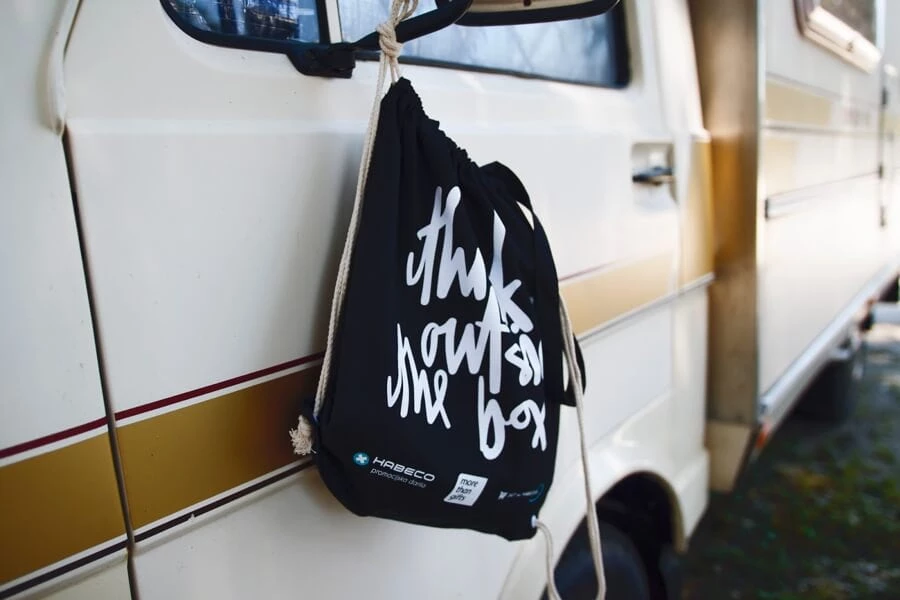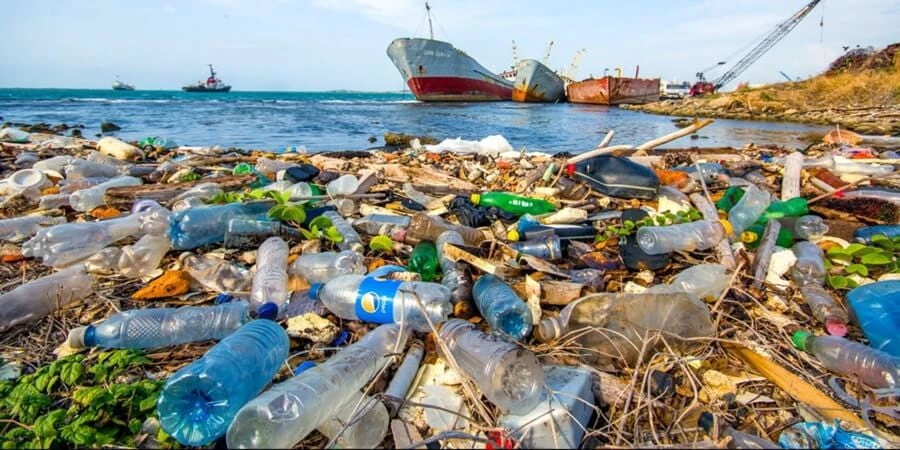We can say with near certainty that we all use plastic bags, from a vegetable seller to a store with unique design products. Plastic bags are popular because they are cheap, durable, light, functional, and hygienically sound for transporting food and other goods. Although we have considered plastic bags to be a modern convenience that we can't do without, they are unfortunately very responsible for polluting our beautiful planet. Therefore, free plastic shopping bags will be banned in stores in Slovenia from the beginning of 2019. So let's be an example and replace the plastic bags with those made of environmentally friendly materials.
This decision taken some time ago by the government is part of an amendment to the Packaging Management Regulation. The European directive requires us to reduce the annual consumption of light plastic bags by less than 90 bags per person by 2019. And by less than 40 lightweight plastic bags per person by the end of 2025. If you find the measure quite drastic, let us tell you otherwise – with statistics. Did you know that we consume between 300 and 600 million plastic bags a year, 89% of which we use only once? This means that every average Slovene consumes 150 to 300 plastic bags a year. How many do you think we recycle? Nothing more than just about 4%. Unfortunately, one plastic bag thrown into nature takes 400 to 1000 years to decompose.
The popularity of plastic - the material of the present and the future
Today, most plastics are obtained by refining crude oil. The first plastic material was discovered in 1839 by Charles Goodyear. With the chemical modification of natural polymers and the development of a vulcanization process. Plastic manufacturing technology experienced the fastest advancement with the progress of chemical technology after the First World War. The historical sensation, however, was caused in the 1930s. It was caused by the invention of polyamide, better known as nylon, at Du Pont Corporation. And how do we call women’s socks differently? Nylons and that name is still synonymous with pantyhose today. During World War II, nylon production focused on making an enormous number of parachutes for soldiers. However, the low production costs and the possibility of precisely adapting the properties of the materials to the purpose have made plastic an indispensable part of everyday life.
How do plastic bags affect our environment?
After using them only once, the lightweight plastic bags go in the trash and then to the landfill. Every year, more and more plastic bags end up in nature. That is why we see numerous videos and photos of piles of plastic bags and other plastics in our rivers, seas, parks, beaches and streets on social networks and in the media. And if they start to burn, they fill the air with toxic fumes that harm humans and animals.
The statistics on the deaths of the latter are appalling. Recently, it has been estimated that around 100,000 animals, such as dolphins, turtles, whales and penguins, die every year due to plastic bags. Many animals mistake plastic bags for food and eat them. And what’s worse is that the ingested plastic bag remains undamaged after the animal dies and decomposes. So it stays in an environment where it can be caught and swallowed by the next victim. According to estimates from earlier this year, about 300 million plastic bags end up in the Atlantic Ocean alone.
How plastic affects human health?
Plastic is a material that lasts almost forever. Because it is not degradable, it only breaks into smaller and smaller pieces. Thus, discarded plastic materials can remain in the environment for up to 2,000 years or more. Toxic chemicals made of plastic are found in the blood and tissues of almost all of us. However, exposure to these chemicals is linked to cancer, birth defects, immune system damage, endocrine disorders and other diseases.
Plastic is also in our groundwater: there are thousands of landfills around the world. Also buried under each of them are toxic chemicals from plastics that flow into groundwater. The latter subsequently flows into our lakes and rivers.
Plastics attract other contaminants: the chemicals in plastics that give them strength or flexibility are greasy toxins. These do not mix with water and stick to petroleum-based objects such as plastic debris. Toxic chemicals that come from plastics can accumulate on other plastic materials. This is a grave problem due to the growing amounts of plastic waste accumulating in the world's oceans.
Plastic threatens wildlife and lands in our food chain: wild animals become entangled in plastic, eat it or gather it for food, and feed their young with it. Even plankton, the tiniest creatures in our oceans, eat microplastics and absorb its dangerous chemicals. Small and dissected pieces of the plastic stick also to the algae. The latter is essential for maintaining substantial marine life, as many animals feed on them. So plastic lands also on our plates. Did you know that in our oceans, plastic debris predominates over plankton in a ratio of 36 to 1?
Plastics cost us billions: because of plastics in rivers and seas, our economy also suffers. That is tourism, recreation, business, human health, animals, fish and birds. The financial damage that is constantly being inflicted is exceptionally high. According to the United Nations Environment Program, plastic waste is causing $ 13 billion in monetary damage, and that number is steadily growing.
What can we do ourselves? Let's replace plastic bags with more environmentally friendly materials!
The task of companies and the country's leaders of the world is to prepare such procedures, laws and rules that we will recycle as much plastic and produce as little new plastic as possible. This also includes lightweight plastic shopping bags, which are a pressing problem around the world. Here are some guidelines on what we can do ourselves:
- Let’s educate ourselves about how plastic bags affect our world and teach our friends, family, neighbours and children about it.
- If we have plastic bags at home, we reuse them. Plastic bags are hard to recycle, so it’s wise to reuse them for shopping or at home as much as possible, of course. For example, they can be a perfect solution for smaller dustbins.
- At the end of the week, count all the plastic bags you brought into your home during the week. When we actually see the number of bags we take home each week, that fact can motivate us to take action sooner.

Time for positive change
Obviously, however, the big and most important step is to use your own bag made of environmentally friendly materials instead of plastic bags. In our offer, you can choose from a wide selection of bags made of fabric, paper and jute – materials that decompose in nature.
And don't forget that a shopping bag is a product we use daily. This subsequently means that it is a practical and appreciative promotional gift. It also substantially raises the profile of your business. This fact is further underlined by the relatively large area for the imprint of your logo and advertising message. A shopping bag actually becomes a travelling poster. In short, a promotional material where we get a lot for very little money.
Briefly, a
shopping bag or a handbag is such a promotion tool that there are not many like that. You can use already made ones, which we can print or embroider. For more demanding customers, we have
available, which we make perfectly according to your wishes.
Furthermore, we also considered the ecological aspect that the reusable bag has as an ECO gift. It is a winning combination, as we will achieve a very positive impression on our customers or business partners. Last but not least, the price, which is amid the lowest, among comparable product groups, also speaks in favour of shopping bags as a perfect promotional gift. In short, if you are thinking about what to give as a promotional gift, our advice is - a shopping bag.
You can request an offer for printing, embroidery or a larger quantity effortlessly on the product web page. If you get stuck, give us a call, and we will be happy to help you with your order as soon as possible. We will also print bags for you with your logo and special message.
You want to have a shopping bag that will reflect your personality. Check out these pre-made and printed shopping bags. However, if you wish to make your own unique one, you can create it on the DIY app.
